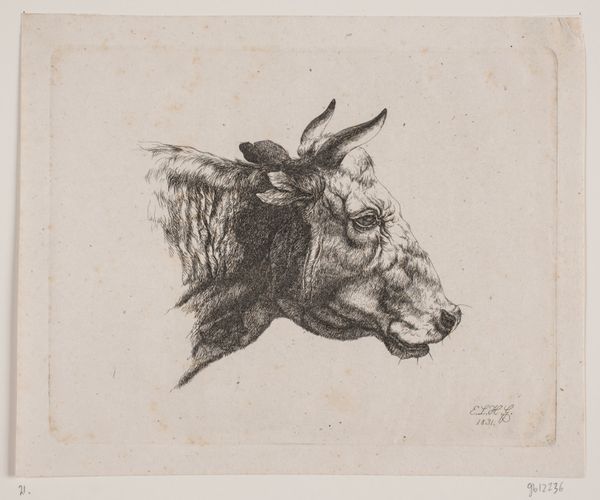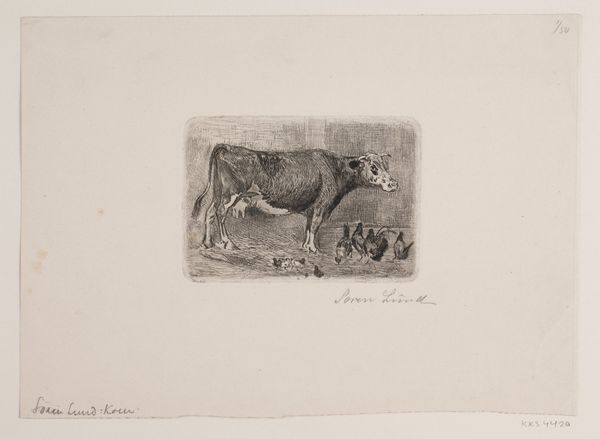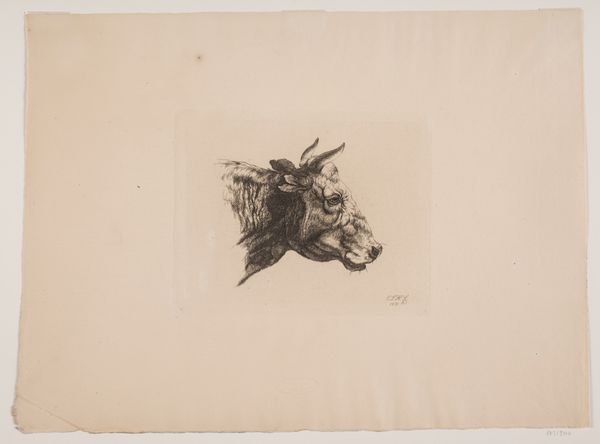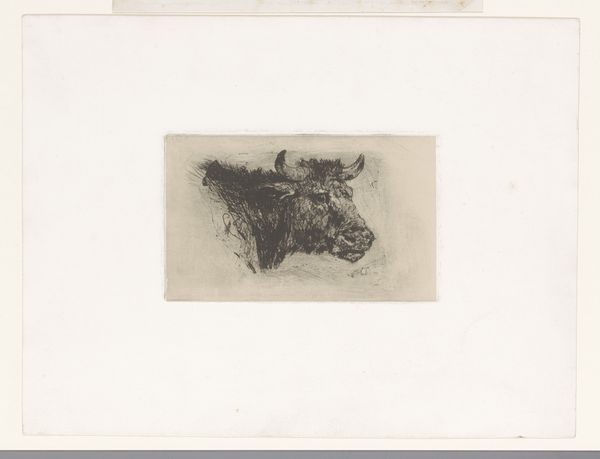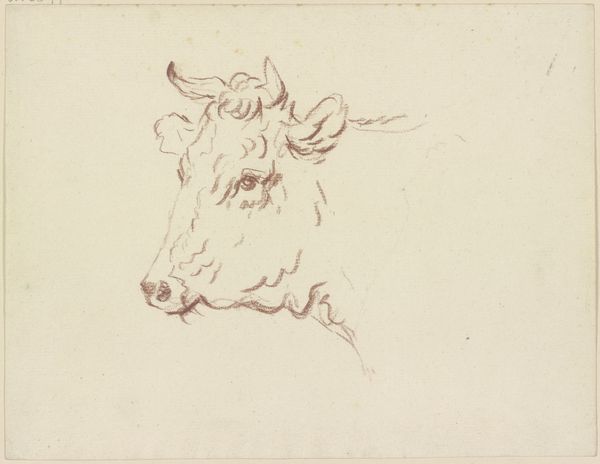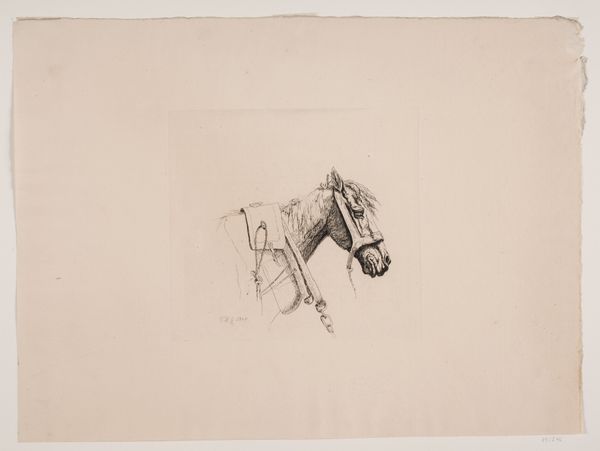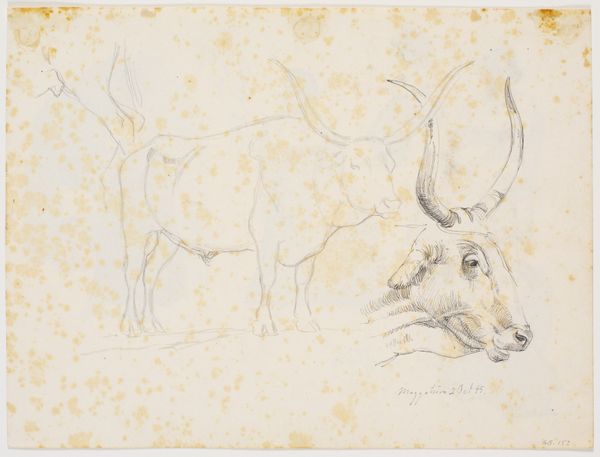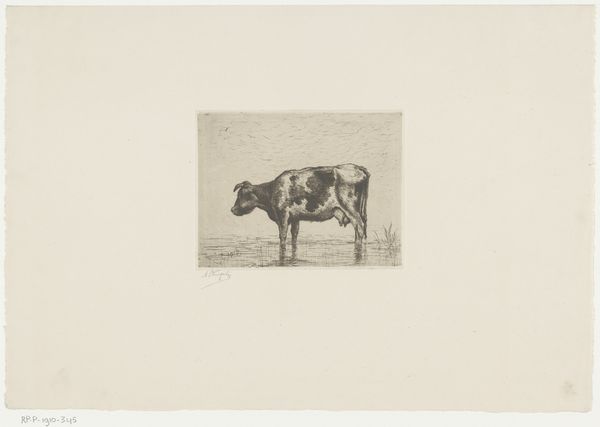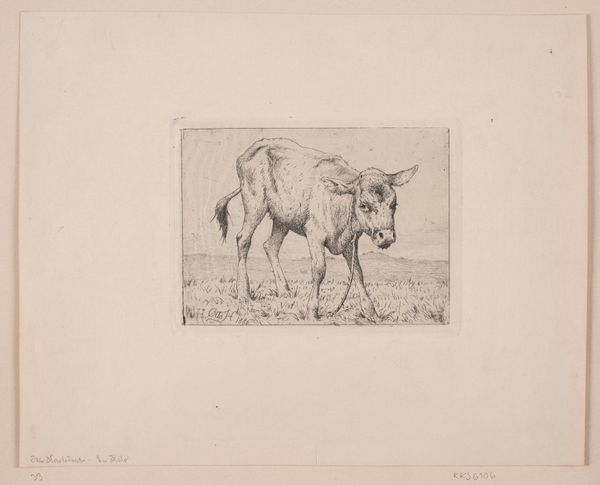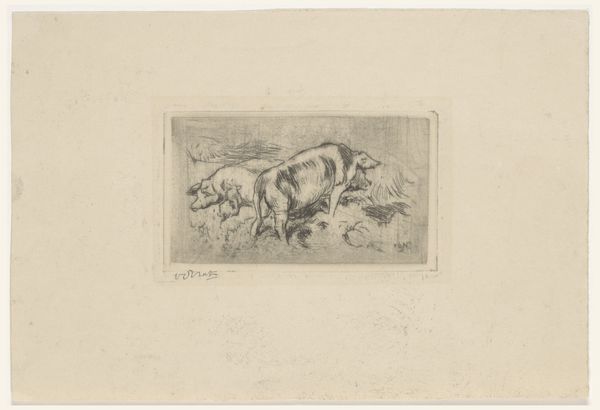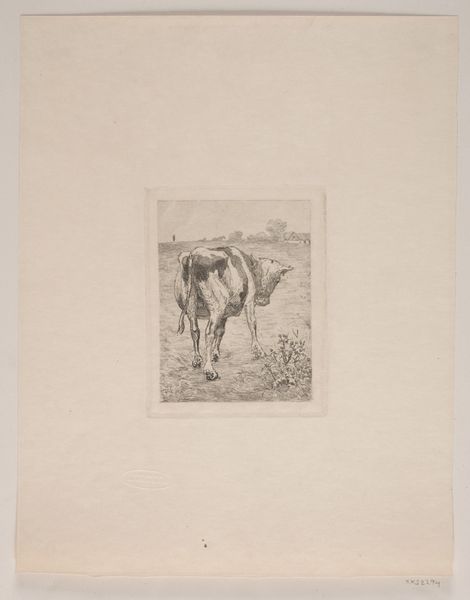
drawing, print, etching, ink
#
portrait
#
drawing
# print
#
etching
#
ink
#
realism
Dimensions: 135 mm (height) x 173 mm (width) (plademaal)
Editor: So, this is "Et kohoved" or "A Cow's Head" by Emmerik Høegh-Guldberg, created in 1831. It’s an etching, a drawing rendered in ink, and the level of detail in such a small piece is quite striking. What strikes you about it? Curator: The hyper-realistic depiction of the cow, created around the dawn of the industrial revolution, compels us to consider its social context. What was the relationship between humans and animals, specifically livestock, during that era? Were artists romanticizing rural life in the face of increasing urbanization? The intense focus on the animal's individual features is particularly striking. It goes beyond mere representation; what might it say about the value, or lack thereof, placed on individual animal lives at this time? Editor: That’s interesting. I hadn't considered the Industrial Revolution link. I just thought it was a good likeness of a cow! Do you think it challenges our contemporary meat production system? Curator: Well, art doesn’t exist in a vacuum. We must always reflect upon how our gaze – especially as a modern, meat-consuming viewer – interacts with an image of an animal rendered with such care nearly two centuries ago. Can it be seen as a form of early animal advocacy, highlighting the individuality and sentience of creatures often reduced to commodities? Is it a comment on class disparity or food availability at the time? These are all valid questions. Editor: It’s strange to think of this as possibly radical now. I think I just took it for granted as a historical artifact. Curator: Precisely. It’s through this contextual questioning that the true radical potential of art is unlocked. It forces us to reckon with historical narratives and their relevance to our present realities. What do you make of the level of detail the artist dedicated to this subject? Editor: Now that I’m considering everything, the details force a consideration of the life of the cow, perhaps of animals used by humans in general, not as things, but individuals with distinct identities. Thank you!
Comments
No comments
Be the first to comment and join the conversation on the ultimate creative platform.
